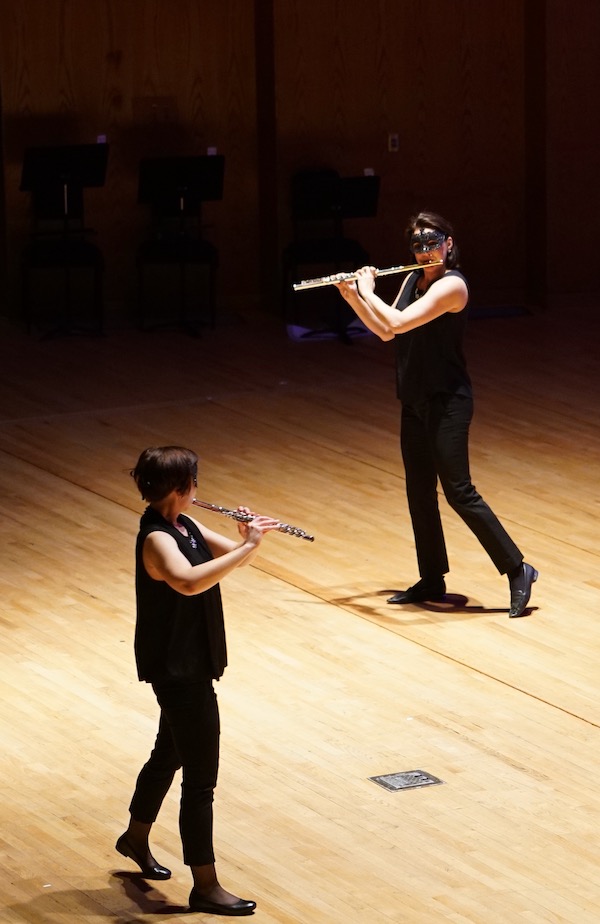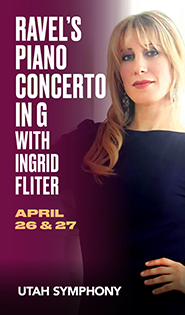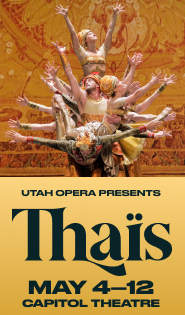Within restrictions, Utah Symphony finds freedom coloring outside the lines

The latest entry in the Utah Symphony’s atypical 2020–21 season delivered not only one of the most creative programs of the year Thursday night, but one unlike any average Abravanel Hall outing. In response to the necessary social-distancing measures and condensed program lengths, the symphony has turned toward the underperformed and rarely heard, providing audiences this weekend with a globally and historically expansive set of excellent music.
In lieu of a conducted ensemble, concertmaster Madeline Adkins served as the string orchestra’s standing (literally) musical leader throughout the program’s first half.
The evening opened with Henrich von Biber’s Battalia, a raucous baroque-era suite that embodied the excess and experimentation of the era so well that it almost became a devilish sendup. With a host of unexpected sound effects (stomping, prepared bass, exaggerated pizzicatos) and structural experiments (purposefully dissonant canons, programmatic detours), Battalia made a perfectly weird and wild introduction.
Josef Suk’s Serenade for Strings in E-flat Major traded Biber’s playfulness for a passionate take on the intersection between modal folksiness and the wayward drifts of modernism. With a surface sheen of tuneful melodies, the brisk opening movement and the finale harnessed unstable rhythms and rich, Late Romantic harmonies for performances that balanced intrigue and pure feeling.
But the third movement Adagio shone brightest. Under Adkins’ direction, the Symphony string players approached this balladic movement with a free-flowing concentration that turned Suk’s expressive ambiguity into pure poetry. As the music moved from impressionistic clouds of sound to volatile climaxes and back again, the strings always retained the wistful essence of the music.
The second half brought the two most audacious departures from the program’s traditional format with chamber works for percussion and flutes.
Inspired by Hawaiian religious lore, Christopher Rouse’s Ku-Ka-Ilimoku calls for four percussionists playing at least two dozen different instruments. Rouse’s score offered all the classic percussion ensemble essentials: dense layers of interlocking rhythms, heavy sixteenth-note breakdowns and a kitchen-sink approach to texture and timbre. Coming after the strings-only first half, this bit of forceful beat-making served as a midpoint wake-up call, a blast out of woodsy classicism into the punch of stick on skin.
The “Incidental II” movement from Tōru Takemitsu’s Masque for two flutes presented an experience that was theatrical as much as musical. Flutists Mercedes Smith and Caitlyn Valovick-Moore used Takemitsu’s spacious duet as the ground for a real-time exploration of physical difference and bodily relationships. As called for in the score, the two soloists donned masquerade face coverings, and the pair delicately danced around each other in spirited conversation while they played Takemitsu’s fragmented phrases. Combining choreography, colorful lighting and a performance that privileged interplay over monologue, this brief work was one of mesmerizing beauty.
The concert closed with Mozart’s Serenade No. 12 in C minor, K. 388/384a, for wind octet. The piece was as delicate and poised as any Mozart—bolstered by some interesting bits of quasi-fugal counterpoint in the later movements—and the symphony winds played with characteristic exactitude and dynamic expressivity.
In the work’s second movement, a steady, triple-meter sway carried a calming, plaintive chordal melody. When the music abruptly bottomed-out into a horn-and-bass quartet, the combination of the natural low resonances and the players’ careful balancing provided the work with one of its most stoic passages. The third movement offered Mozart’s characteristic scalar runs and sequences layered over each other in swirling dissonances before undergoing a chameleonic major transposition in its middle section that illuminated the tricky subtlety at the heart of the composer’s work.
But for all the fine elements of the Mozart performance, coming after the whimsy of Biber, Suk’s expressivity, Rouse’s joyride and the hypnotic Takemitsu, this straight-ahead Classicism felt like a reserved denouement as opposed to a gripping finale.
All in all though, this program found the Utah Symphony stretching their comfort zone—and that of their audience— with great success. For an orchestra whose repertoire leans heavily on the European canon, such a program was a welcome departure into unexplored worlds.
The program will be repeated 7:30 p.m. Friday and 1 p.m. and 7:30 p.m. Saturday. utahsymphony.org; 801-533-6683.
Connor Lockie is a journalist and musician currently living in Salt Lake City. When not deciphering graphic scores or practicing Deep Listening, Connor enjoys hiking, cheap wine and cats.


Posted Nov 17, 2020 at 6:36 am by Richard Clegg
Beautifully written! Beautifully performed! Beautifully conceived!